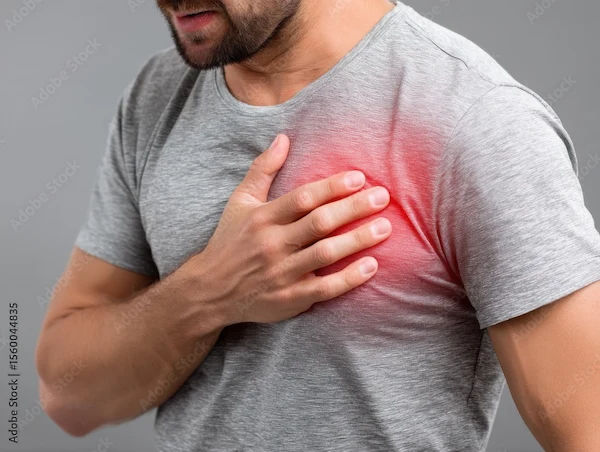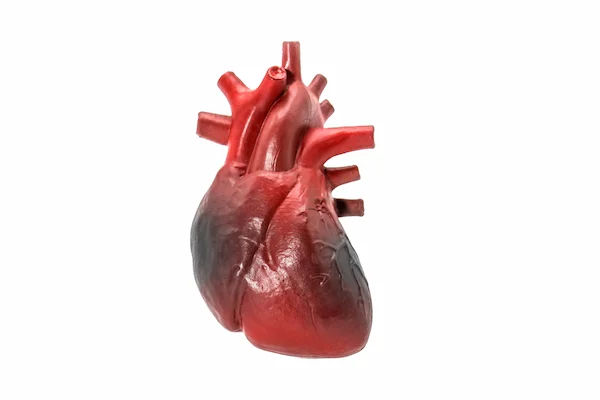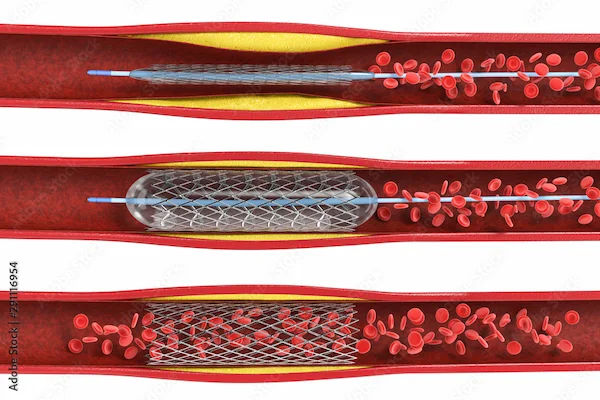Internal Bleeding After Angioplasty
Internal bleeding after angioplasty is a serious complication. Learn about symptoms, causes, risk factors, and when to seek immediate medical attention.

Written by
Last updated on 7th Jul, 2025

Introduction
Angioplasty is a common and life-saving procedure used to open blocked or narrowed arteries, often in the heart (coronary angioplasty). While it is generally safe, like any medical procedure, it carries some risks. One of the possible complications is internal bleeding, which can occur at the site where the catheter was inserted or elsewhere in the body.
If you or a loved one has undergone angioplasty, it’s important to be aware of the signs of internal bleeding and know when to seek medical help. This article will explain what internal bleeding after angioplasty means, its symptoms, causes, and how to manage it effectively.
What is Internal Bleeding After Angioplasty?
Internal bleeding refers to blood loss inside the body, which may not always be visible. After angioplasty, bleeding can happen:
At the catheter insertion site, usually the groin or wrist.
In the abdomen or other organs due to blood-thinning medications given during or after the procedure.
Bleeding can range from mild to severe, and timely detection is crucial to prevent complications.
Symptoms of Internal Bleeding After Angioplasty
Since internal bleeding isn’t always obvious, watch out for these warning signs:
1. At the Catheter Insertion Site
Swelling, pain, or bruising that worsens over time.
A lump (hematoma) under the skin near the puncture site.
Persistent bleeding that doesn’t stop with pressure.
2. General Signs of Internal Bleeding
Dizziness or fainting due to blood loss.
Weakness or fatigue without any clear reason.
Pale skin, rapid heartbeat, or low blood pressure that are signs of significant blood loss.
Abdominal pain or swelling if bleeding occurs in the stomach or intestines.
Black or bloody stools indicating gastrointestinal bleeding.
If you experience any of these symptoms, seek immediate medical attention.
Get Your Symptoms Checked With a Cardiologist
What Causes Internal Bleeding After Angioplasty?
Several factors can increase the risk of internal bleeding after angioplasty:
1. Blood-Thinning Medications
After angioplasty, patients are often prescribed antiplatelet drugs (like aspirin or clopidogrel) and anticoagulants (like heparin) to prevent blood clots.
While these medications are necessary, they can increase the risk of bleeding.
2. Catheter Insertion Technique
If the artery is accidentally punctured in the wrong place or if there’s difficulty in controlling bleeding after removing the catheter.
3. Underlying Health Conditions
Conditions like kidney disease, liver problems, or bleeding disorders can increase the risk.
Older age and high blood pressure also contribute to higher bleeding risks.
How to Prevent Internal Bleeding After Angioplasty?
While some bleeding risks are unavoidable, you can take steps to minimise complications:
1. Follow Post-Procedure Care Instructions
Keep the insertion site clean and dry.
Avoid heavy lifting or strenuous activity for a few days to prevent strain on the wound.
Apply pressure if minor bleeding occurs.
2. Take Medications as Prescribed
Do not stop blood thinners without consulting your doctor, as they prevent dangerous clots.
However, inform your doctor if you notice unusual bruising or bleeding.
3. Stay Hydrated and Eat a Balanced Diet
Include iron-rich foods (spinach, lentils, red meat) to help with blood recovery if minor bleeding occurs.
Avoid excessive alcohol, as it can worsen bleeding.
4. Monitor for Symptoms
Check the insertion site daily for swelling or discolouration.
Keep track of any dizziness, weakness, or unusual pain.
When to Seek Emergency Help?
Seek immediate medical care if you notice:
Severe, uncontrolled bleeding at the insertion site.
Sudden dizziness, fainting, or confusion.
Severe abdominal pain or swelling.
Black or bloody stools/vomit.
Internal bleeding can become life-threatening if not treated promptly.
Treatment for Internal Bleeding After Angioplasty
If bleeding is detected early, doctors can manage it effectively with:
Pressure application at the bleeding site.
Blood transfusions are used in severe cases.
Adjusting or stopping blood-thinning medications temporarily.
Surgery or embolisation (blocking the bleeding vessel) in rare cases.
Conclusion
Internal bleeding after angioplasty is a rare but serious complication. By being aware of the symptoms and following post-procedure care, you can reduce risks and recover smoothly.
If you have concerns about bleeding or other complications after angioplasty, don’t hesitate to consult a doctor. Early intervention can make all the difference. You can book a consultation with a cardiologist on Apollo 24|7 for personalised guidance and care.
Consult Top Cardiologists
Get Your Symptoms Checked With a Cardiologist

Dr. Tripti Deb
Cardiologist
40 Years • MBBS, MD, DM, FACC, FESC
Hyderabad
Apollo Hospitals Jubilee Hills, Hyderabad

Dr. Anand Ravi
General Physician
2 Years • MBBS
Bengaluru
PRESTIGE SHANTHINIKETAN - SOCIETY CLINIC, Bengaluru

Dr. Sumanjita Bora
Cardiologist
9 Years • MBBS, PGDCC
Bengaluru
Apollo Clinic, Sarjapur Road, Bengaluru

Dr. Zulkarnain
General Physician
2 Years • MBBS, PGDM, FFM
Bengaluru
PRESTIGE SHANTHINIKETAN - SOCIETY CLINIC, Bengaluru

Dr. Amit. A. Bharadiya
Cardiologist
12 Years • MBBS, MD General Medicine, DNB Cardiology, FSCAI
Maharashtra
Surabhi Hospital, Maharashtra, Maharashtra
(50+ Patients)
Consult Top Cardiologists

Dr. Tripti Deb
Cardiologist
40 Years • MBBS, MD, DM, FACC, FESC
Hyderabad
Apollo Hospitals Jubilee Hills, Hyderabad

Dr. Anand Ravi
General Physician
2 Years • MBBS
Bengaluru
PRESTIGE SHANTHINIKETAN - SOCIETY CLINIC, Bengaluru

Dr. Sumanjita Bora
Cardiologist
9 Years • MBBS, PGDCC
Bengaluru
Apollo Clinic, Sarjapur Road, Bengaluru

Dr. Zulkarnain
General Physician
2 Years • MBBS, PGDM, FFM
Bengaluru
PRESTIGE SHANTHINIKETAN - SOCIETY CLINIC, Bengaluru

Dr. Amit. A. Bharadiya
Cardiologist
12 Years • MBBS, MD General Medicine, DNB Cardiology, FSCAI
Maharashtra
Surabhi Hospital, Maharashtra, Maharashtra
(50+ Patients)



